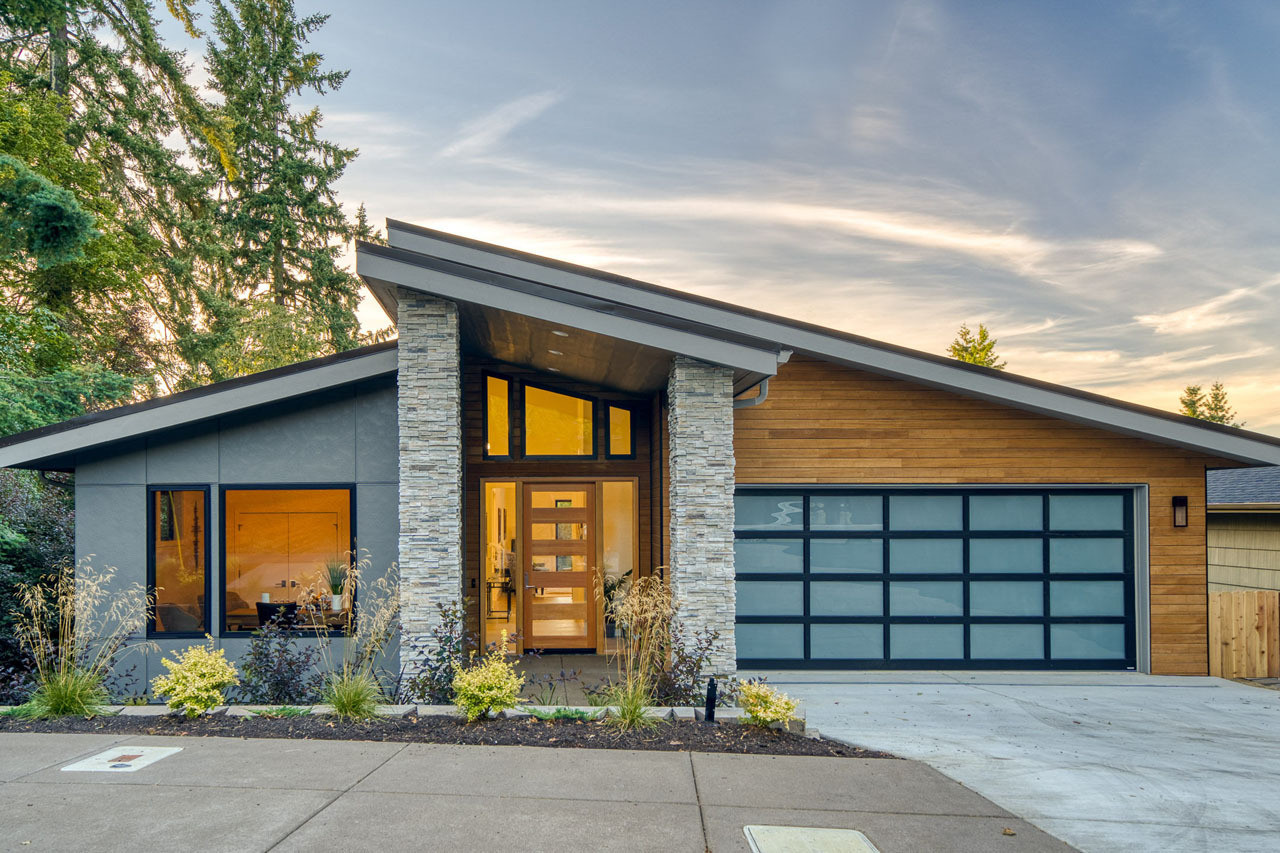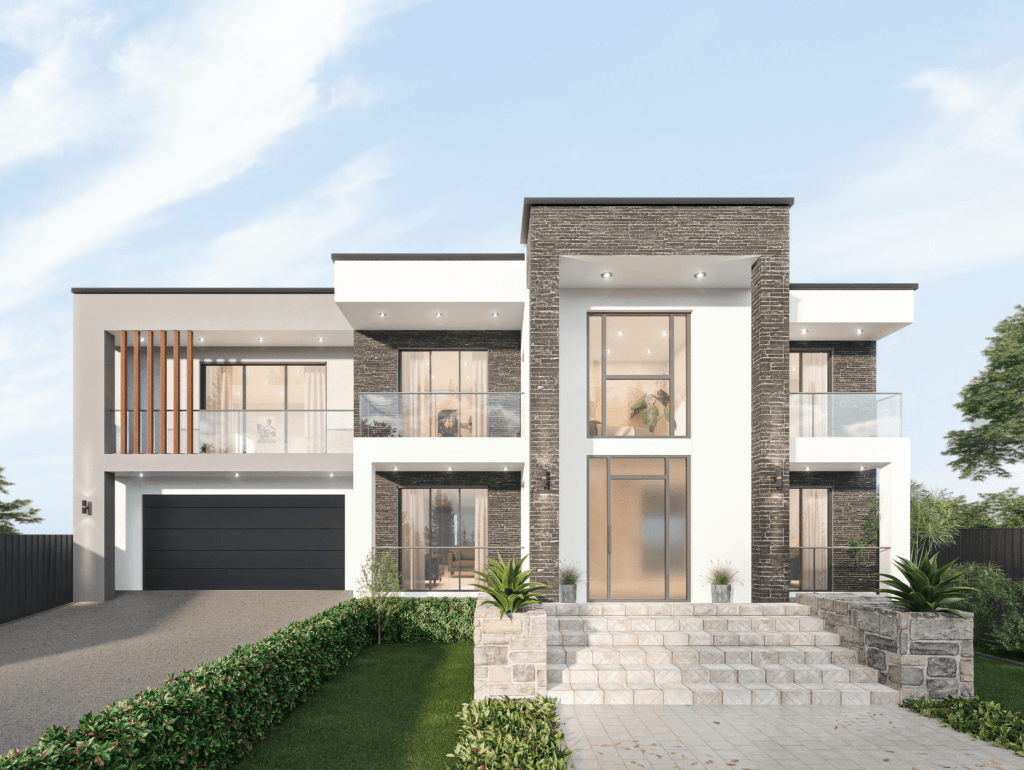Exploring the Conveniences of Modern Home Style in Contemporary Layout
The exploration of contemporary home style within contemporary design discloses an advanced interplay in between aesthetic appeal and practical effectiveness. By focusing on aspects such as energy efficiency, boosted interior air top quality, and liquid shifts between indoor and outdoor rooms, modern styles cater to the evolving needs of today's home owners.
Enhanced Energy Efficiency
In modern-day home architecture, one typically discovers a significant emphasis on improved power performance, which is critical in attending to climbing power expenses and environmental issues. Engineers and builders are progressively integrating ingenious layout strategies and progressed innovations to optimize energy usage in residential areas. This paradigm shift is driven by an expanding understanding of sustainability and the need to decrease carbon footprints.
Key functions of energy-efficient homes consist of remarkable insulation, energy-efficient home windows, and making use of lasting products. These design components operate in tandem to reduce warm loss in winter season and decrease heat gain in summertime, making certain a comfortable living atmosphere year-round. In addition, modern-day homes often integrate renewable resource sources, such as photovoltaic panels, which not only lower dependence on non-renewable energy but also offer possible expense savings for property owners.

Boosted Indoor Air High Quality
Focusing on improved indoor air quality has become a trademark of modern-day home architecture, as home owners increasingly recognize the value of a healthy and balanced living environment. Contemporary style integrates advanced products, air flow systems, and smart innovation to promote cleaner air within household areas.

Additionally, the layout of modern-day homes often highlights all-natural ventilation, permitting fresh air to distribute and reducing reliance on artificial climate control. Tactically placed windows, skylights, and vents help with airflow, adding to an atmosphere that deals with interior air stagnation.
Furthermore, integrating biophilic layout elements, such as indoor plants, not only improves aesthetic charm yet additionally serves to purify the air. modern home architecture melbourne. On the whole, by focusing on improved interior air top quality, modern home style not just improves the comfort and well-being of its residents however likewise fosters a sustainable living setting that straightens with modern health and wellness requirements

Seamless Indoor-Outdoor Link
As modern-day homeowners look for to improve their living experiences, the principle of a smooth indoor-outdoor connection has obtained considerable grip in modern design. This style approach obscures the borders between indoor rooms and the natural surroundings, advertising an unified coexistence that improves day-to-day live.
Building elements such as extensive sliding glass doors, big home windows, and open floor plans promote this connection, enabling rooms to flow easily from inside your home to outdoors. These functions not only produce a sense of visibility yet also motivate interaction with nature, which can have extensive effects on mental well-being.
In addition, a smooth indoor-outdoor link enhances the capability of living rooms. Outside areas can act as extensions of the home, accommodating different activities such as dining, amusing, or leisure. By incorporating landscaping and outdoor furnishings that complement interior decoration, house owners can develop inviting settings that deal with diverse lifestyles.
Additionally, this building strategy commonly highlights sustainability, as all-natural air flow and passive air conditioning methods minimize reliance on fabricated climate control. Ultimately, welcoming a seamless indoor-outdoor link cultivates an extra vibrant, vibrant, and health-conscious living experience.
Optimizing Natural Light
Natural light is a crucial element in modern-day home style, considerably improving both aesthetic allure and occupant health. The strategic incorporation of big home windows, skylights, and open rooms enables natural light to flooding interiors, developing lively and welcoming atmospheres. This design approach not just boosts the visual allure of a home however additionally cultivates a link to the outdoors, promoting a feeling of harmony and visibility.
Furthermore, maximizing natural light adds to energy performance, reducing dependence on synthetic illumination during the day. Houses made with this concept in mind usually include reflective surface areas and light products that amplify the effects of all-natural light, ensuring that rooms feel brilliant and ventilated. This not just boosts comfort but also lessens power costs.
Furthermore, exposure to all-natural light has actually been linked to boosted state of mind and efficiency amongst residents. By producing well-lit spaces that motivate communication and activity, modern home architecture melbourne modern design can substantially impact the lifestyle within the home. Inevitably, the thoughtful integration of natural light is a hallmark of contemporary style, blending functionality with charm while fostering a healthier living atmosphere.
Modification and Versatility
The focus on maximizing natural light in modern home design seamlessly enhances the concepts of personalization and versatility. This building method accommodates specific choices, allowing house owners to tailor their space to fulfill their unique needs and way of livings. Customization in design makes it possible for the integration of individual appearances, whether via the choice of products, color palettes, or spatial setups.
Adaptability is another cornerstone of modern building fads, assisting in adaptive living settings that can develop in time. Open up layout, movable dividings, and multifunctional spaces are crucial attributes that support vibrant living plans. These aspects empower house owners to develop locations that can transform for different functions-- whether for job, leisure, or social events-- boosting functionality without jeopardizing design.
Additionally, the assimilation of wise home innovation even more amplifies modification. Eventually, customization and flexibility in modern home design foster a deeper link between people and their living areas.
Conclusion
In recap, contemporary home architecture in modern layout presents numerous advantages, including boosted energy performance, boosted indoor air quality, seamless indoor-outdoor connections, made the most of natural light, and boosted customization alternatives. These aspects collectively add to healthier living environments and promote sustainable methods, ultimately profiting both house owners and the wider neighborhood. The innovative assimilation of visual appeals and capability within modern-day style not just raises the lifestyle but likewise supports a more ecologically aware future.
 Edward Furlong Then & Now!
Edward Furlong Then & Now! Spencer Elden Then & Now!
Spencer Elden Then & Now! Tony Danza Then & Now!
Tony Danza Then & Now! Andrew Keegan Then & Now!
Andrew Keegan Then & Now! Brooke Shields Then & Now!
Brooke Shields Then & Now!